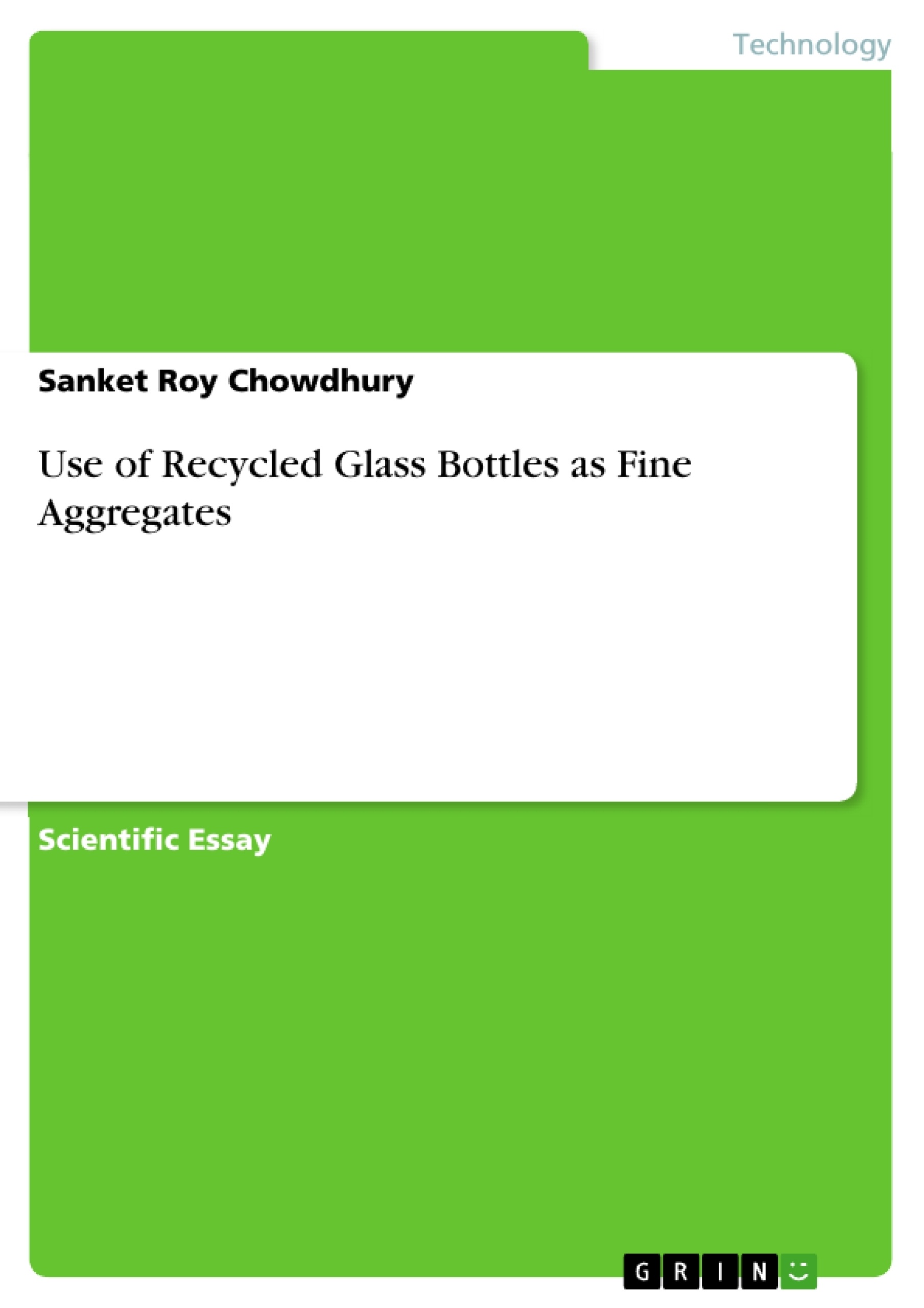This study is aimed to design a concrete mixture with recycled bottles as a fine aggregate for housing projects (finely powdered waste glasses are used as a partial replacement). On mixing the concrete with waste glass powder, the workability of concrete, the compressive strength and also the durability of concrete are expected to increase. Further, the density of glass concrete is also reduced as compared to standard mixture of concrete. Thus waste glass can effectively be used as fine aggregate replacement without much change in strength.
This paper attempts to review over the use of glass aggregates in cement mixture thereby understanding its feasibility of recycling.
Inhaltsverzeichnis (Table of Contents)
- I. Introduction
- II. Objective of Study
- III. Methodology
- A. Normal consistency:
- B. Slump cone test:
- C. Workability:
- D. Compression Strength Test:
- IV. Benefits.
- V. Results and Discussions
- VI. Conclusion
Zielsetzung und Themenschwerpunkte (Objectives and Key Themes)
The main objective of this study is to investigate the feasibility of using recycled glass as a partial replacement for cement in concrete mixtures. This research aims to provide a sustainable solution for waste glass disposal while improving the properties of concrete.
- Investigating the use of recycled glass as a fine aggregate in concrete.
- Evaluating the impact of glass powder on the workability, compressive strength, and durability of concrete.
- Analyzing the environmental benefits of using recycled glass in construction.
- Exploring the potential for cost reduction and improved performance in concrete production.
- Developing a sustainable and environmentally friendly approach to construction.
Zusammenfassung der Kapitel (Chapter Summaries)
I. Introduction: This chapter introduces the concept of using recycled glass as a fine aggregate in concrete mixtures. It highlights the environmental concerns associated with waste glass disposal and the need for sustainable construction practices.
II. Objective of Study: This chapter outlines the specific goals of the study, which include investigating the feasibility of using recycled glass as a partial replacement for cement, evaluating its impact on concrete properties, and exploring the economic and environmental benefits.
III. Methodology: This chapter details the experimental methodology used in the study. It describes the materials used, the concrete mix proportions, and the tests conducted to assess the properties of the concrete mixtures.
IV. Benefits: This chapter discusses the potential benefits of using recycled glass as a fine aggregate in concrete, including improved strength, ease of workability, and environmental friendliness.
V. Results and Discussions: This chapter presents the results of the compressive strength tests conducted on both ordinary and glass-added concrete. It analyzes the data and discusses the findings in relation to the study's objectives.
Schlüsselwörter (Keywords)
The primary focus of this study revolves around the utilization of recycled glass as a sustainable construction material. Key terms and concepts include: powdered waste glass, concrete, fine aggregates, recycled bottles, cement, workability, compressive strength, density, and feasibility.
- Citation du texte
- Sanket Roy Chowdhury (Auteur), 2015, Use of Recycled Glass Bottles as Fine Aggregates, Munich, GRIN Verlag, https://www.grin.com/document/303434



